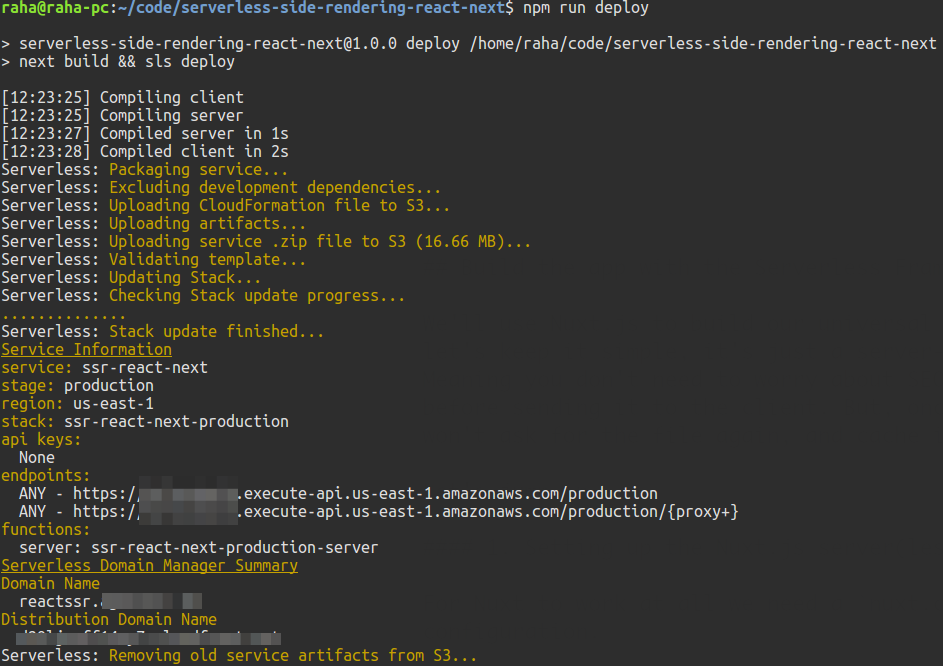


#Npm serverless nextjs code#
Thanks to the included schematics, your server code is now ready to be deployed on Azure Functions! And the best part is that nothing was changed in your code, it can still run locally like previously. You can do this in NestJS by editing the src/main.ts and call the setGlobalPrefix() method after the app creation: You can look at the NestJS controller documentation for the list of all annotations and options that can be used to define endpoints.Ī common good practice is to define a global path prefix for all your endpoints, making it easy to later version your API or expose it alongside static assets. This endpoint will return a status code 200 and the associated response, which in our case is just a string. The optional argument 'random' will be used as a path for this endpoint.Ĭombining the controller path prefix with our request handler path, NestJS will create the GET /facts/random HTTP endpoint. The annotation defines a new HTTP GET request handler, creating a new endpoint. The optional argument 'facts' used here will be used as the base route prefix for all handlers defined within that class. The annotation specifies that this class will handle incoming requests and return responses to the client. Let's create a new folder in which we will put both the frontend and backend code.Įnter fullscreen mode Exit fullscreen mode
#Npm serverless nextjs for free#
If you don't have an account, you can create one for free using this link (includes free credits, more than enough to cover usage for this article). Īn Azure account is also needed to create resources and deploy the application.
#Npm serverless nextjs install#
If you do not want to install it locally, you can use. The Azure CLI to create resources on Azure.Azure Functions Core Tools to test and deploy your backend.Use Azure Storage static website hosting to deploy your Angular app with ng deploy.Use Azure Functions to deploy your API in a cost-efficient and scalable way.Build an Angular app and connect it to your backend for both local and remote development.Build a serverless Node.js API from scratch using NestJS.Here is the final project source code on GitHub. Nitro stack (= Angular + NestJS + Azure Serverless) allows you to build full-stack TypeScript apps in a consistent, robust and cost-efficient way.Preparing a NestJS app for serverless deployment with Azure Functions can be done with just nest add and requires no changes to the existing structure.If you like Angular, you should take a look at NestJS: it leverages the same concepts, features, and architecture but for Node.js backend development.New articles are published every day - that's right, every day - from community members and cloud advocates in the month of September.įind out more about how Microsoft Azure enables your Serverless functions at. You'll find other helpful articles, detailed tutorials, and videos in this all-things-Serverless content collection. This article is part of #ServerlessSeptember.

The app we will build is a simple "random cat fact" that will fetch an interesting cat fact from our API and display it on a web page, like this: In this article we will go through all the steps to bootstrap, build and deploy a complete application using the Nitro stack: Angular for the frontend, NestJS for the backend and Azure Serverless platform for deployment. Ever wanted to take the plunge and see what it looks like to build a complete serverless app from scratch? Let's just do that!


 0 kommentar(er)
0 kommentar(er)
